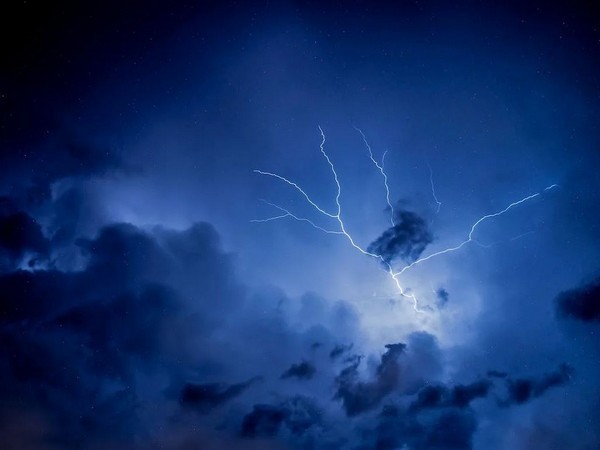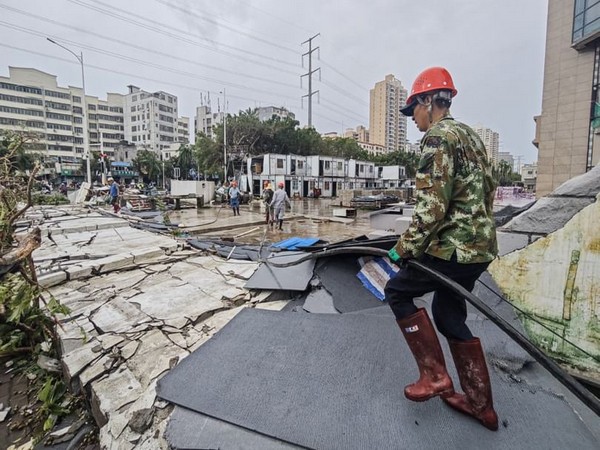
Storm Idalia strikes Georgia, Carolinas after slamming Florida
Sep 01, 2023
Tbilisi [Georgia], September 1: Florida began assessing the damage Wednesday from Idalia's flooding after the powerful storm inundated coastal communities and knocked out power to thousands, as the system advanced up the southeastern US coast bringing additional rain deluges and dangerous storm surge. After roaring across the Sunshine State, Idalia barreled into neighboring Georgia and weakened to a tropical storm that nevertheless was drenching the region with up to 10 inches (25 centimeters) of rain and bringing life-threatening storm surges to coastal communities, officials said.
They described Idalia and its record-high surging waters as a once-in-a-lifetime event for the area of northwest Florida most affected. While there were no immediately confirmed deaths, Florida Governor Ron DeSantis stressed "that very well may change," given the storm's magnitude. State officials said first responders including search and rescue teams were operational but warned it could take time to reach more remote areas blocked by fallen trees or high water.
Idalia struck as an "extremely dangerous" Category 3 hurricane in Florida's marshy, sparsely populated Big Bend area around 7:45 am (1145 GMT) Wednesday, the US National Hurricane Center (NHC) reported. The storm crashed ashore packing maximum sustained winds of approximately 125 miles (215 kilometers) per hour near the community of Keaton Beach, with a possible storm surge of up to 16 feet (about five meters) in some coastal areas, the NHC said.
Though Idalia weakened to a Category 1 hurricane and eventually a tropical storm with winds of 60 miles per hour, it remained dangerous as it raked over Georgia and into South Carolina. Ben Almquist, emergency management director for Charleston, South Carolina, told CNN late Wednesday: "We still have plenty of floodwaters throughout the city right now," and some rescue operations were underway. But Thursday morning was shaping up to be Idalia's last gasp.
'Pretty scary'
Mass evacuations were ordered earlier for thousands of Floridians - although many defied authorities and hunkered down. In Perry, a small town in Idalia's path, emergency crews were already cleaning up and residents who stayed behind were assessing the impact. John Kallschmidt, 76, struggled to push aside a pine tree that fell on the roof of his small wooden house. "It got pretty scary with all the trees blowing over and coming down," he told AFP.
"But it's the way it is, it's life in Florida. You have to get accustomed to this kind of thing." In coastal Steinhatchee, about 20 miles (32 kilometers) south of Idalia's landfall, streets were mostly deserted hours after the storm inundated virtually the entire town. Patrick Boland, 73, downplayed the disaster. "It was a little windy," he said. "The trees were coming down in my front yard, but other than that, the house is fine."
Speedy storm
In the Tampa Bay area - a metropolitan zone of some three million people - streets were submerged and flood waters swept across yards. Just north in the city of Tarpon Springs, residents waded, or even canoed, to safety as homes and apartments were inundated. DeSantis told reporters that Idalia moved faster than some of the more disastrous hurricanes that have hit the state in which the eye of the storm idled along the coastline and caused death and severe destruction. His governor's mansion was not spared damage. A century-old oak tree crashed into a wing of the historic Tallahassee residence.
First Lady Casey DeSantis said she was home at the time with their three children, but no one was hurt. Around 147,000 customers in Florida and 133,000 in Georgia were without electricity early Thursday, according to tracking website PowerOutage.us. Power was also out for about 34,000 in South Carolina, where the NHC has forecasted flooding. With the White House calling for storm vigilance, the Federal Emergency Management Agency deployed more than 1,000 emergency personnel to the disaster zone.
"Idalia is the strongest storm . to make landfall in this part of Florida in over 100 years," FEMA Administrator Deanne Criswell said. The storm dealt a glancing blow to Cuba before moving over the Gulf of Mexico, which scientists say is experiencing a "marine heat wave" - energizing Idalia's winds as it raced towards Florida. Record-breaking temperatures off Florida are expected to amplify Atlantic storms this season, with scientists blaming human-caused climate change for the overall warming trend. "These storms are intensifying so fast that our local emergency management officials have less time to warn and evacuate and get people to safety," Criswell told a press conference on Wednesday. - AFP
Source: Kuwait Times









